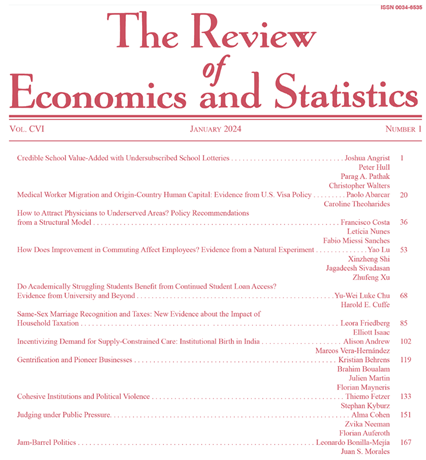Mortality in the Volgograd Region Against the COVID-19 Pandemic
IF 6.8
1区 经济学
Q1 ECONOMICS
引用次数: 0
Abstract
The COVID-19 pandemic, which began in Russia in March 2020, had a huge impact on socio-economic processes. In numerous studies analyzing mortality caused by coronavirus infection, it is concluded that the number of deaths is underestimated. The high morbidity and mortality caused by coronavirus infection has far-reaching consequences for the economy of the regions and the country as a whole: deterioration in health, a decrease in the working-age population, a change in the structure of consumption of goods and services, etc. In this regard, it is relevant to analyze the processes associated with mortality from coronavirus infection.The purpose of the study is to identify the main trends in the nosological and age-sex structure of mortality in the Volgograd region in the years preceding the COVID-19 pandemic, to assess the contribution of mortality from coronavirus infection to total mortality in 2020. Estimation of excess mortality was carried out taking into account the dynamics of age-specific mortality rates.Materials and methods. The main sources of information for the study of mortality were the Russian database on fertility and mortality and Rosstat data. In the work, when analyzing mortality from COVID-19, data from the operational headquarters were also used. The analysis of the mortality dynamics was carried out using such indicators as the average life expectancy at birth, the crude death-rate, age-specific mortality rates in absolute and relative (per 1000 people) terms. The processing of statistical data was carried out using the Microsoft Excel application package and matplotlib, pandas, numpy (Python programming language), pyramid (R programming language) libraries.Results. In 2020, the number of deaths in the Volgograd region turned out to be more than in 2019 by 6647 people. If the trends in the dynamics of the intensity of mortality would persist in the year of the pandemic, then the total number of deaths in the Volgograd region would be equal to 32044 people. In this case, the excess mortality would have amounted to 7368 people.Conclusion. As a result of the study, it was revealed that a significant increase in the number of deaths in the Volgograd region during the pandemic is explained by Rosstat as the cause of coronavirus infection by only 33.2%. This discrepancy may be the result of incorrect accounting of deaths from coronavirus infection. Another factor in the increase in mortality during a pandemic may be a decrease in the quality of medical care. There has been a reorientation of the work of medical institutions to the treatment of patients with coronavirus infection; the burden on emergency medical care has increased.2019冠状病毒病大流行期间伏尔加格勒地区的死亡率
2019冠状病毒病大流行于2020年3月在俄罗斯开始,对社会经济进程产生了巨大影响。在分析冠状病毒感染导致的死亡率的众多研究中,得出的结论是,死亡人数被低估了。冠状病毒感染造成的高发病率和高死亡率对各地区和整个国家的经济产生了深远的影响:健康状况恶化,劳动年龄人口减少,商品和服务消费结构发生变化,等等。在这方面,有必要分析与冠状病毒感染死亡率相关的过程。该研究的目的是确定2019冠状病毒病大流行前几年伏尔加格勒地区病种学和年龄性别死亡率结构的主要趋势,评估2020年冠状病毒感染死亡率对总死亡率的贡献。考虑到特定年龄死亡率的动态变化,对超额死亡率进行了估计。材料和方法。死亡率研究的主要资料来源是俄罗斯生育率和死亡率数据库和俄罗斯国家统计局的数据。在这项工作中,在分析COVID-19死亡率时,还使用了来自业务总部的数据。使用出生时平均预期寿命、粗死亡率、按绝对和相对(每1000人)计算的特定年龄死亡率等指标对死亡率动态进行了分析。采用Microsoft Excel应用程序包和matplotlib、pandas、numpy (Python编程语言)、pyramid (R编程语言)等库对统计数据进行处理。2020年,伏尔加格勒地区的死亡人数比2019年多了6647人。如果死亡强度的动态趋势在大流行年份持续下去,那么伏尔加格勒地区的死亡总人数将等于32044人。在这种情况下,额外的死亡率将达到7368人。研究结果显示,俄罗斯国家统计局仅以33.2%的比例解释了伏尔加格勒地区在大流行期间死亡人数的大幅增加是冠状病毒感染的原因。这种差异可能是由于对冠状病毒感染死亡人数的统计有误。大流行期间死亡率上升的另一个因素可能是医疗保健质量下降。医疗机构的工作重新定位于冠状病毒感染患者的治疗;急救医疗的负担增加了。
本文章由计算机程序翻译,如有差异,请以英文原文为准。
求助全文
约1分钟内获得全文
求助全文
来源期刊

Review of Economics and Statistics
Multiple-
CiteScore
8.50
自引率
0.00%
发文量
175
期刊介绍:
The Review of Economics and Statistics is a 100-year-old general journal of applied (especially quantitative) economics. Edited at the Harvard Kennedy School, the Review has published some of the most important articles in empirical economics.
 求助内容:
求助内容: 应助结果提醒方式:
应助结果提醒方式:


